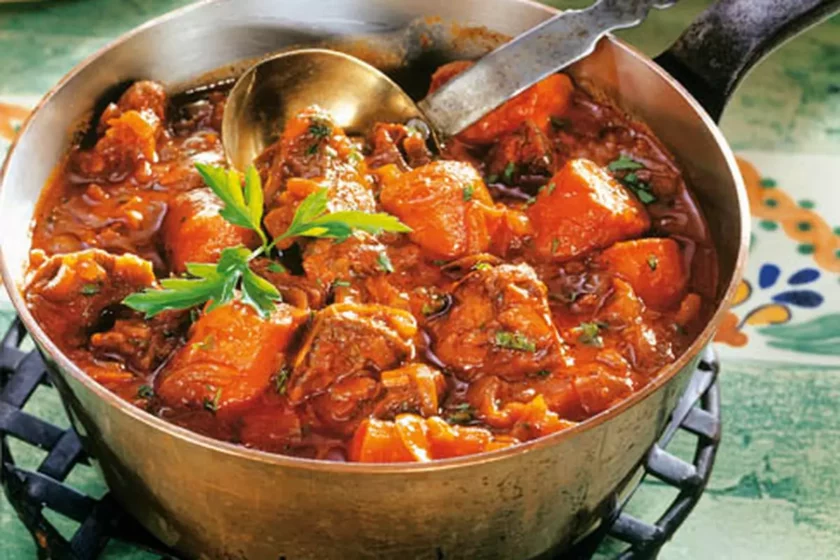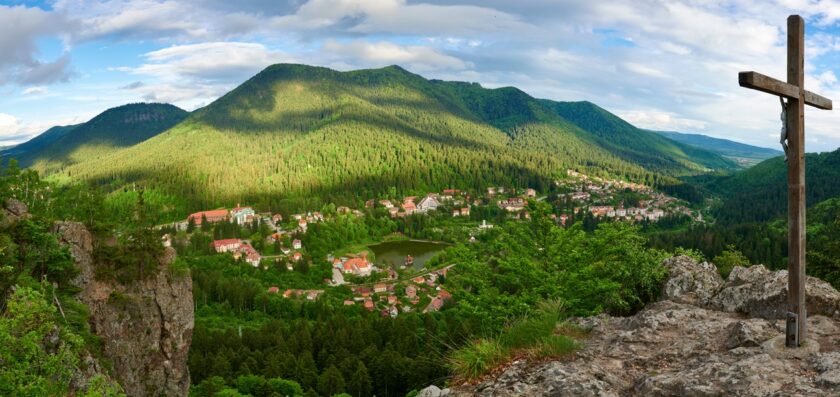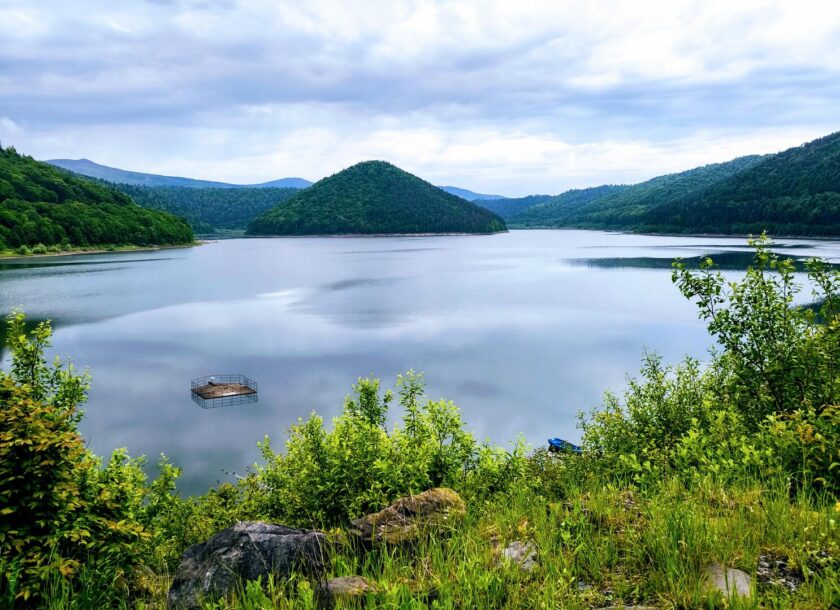Harghita County, located in the heart of Transylvania, Romania, is a region where culinary traditions reflect the rich cultural heritage of its inhabitants, particularly the Székely people, an ethnic Hungarian group. The traditional foods of Harghita are deeply tied to the region’s geography, history, and local produce, blending Hungarian, Romanian, and Saxon influences to create a unique and flavorful cuisine. Traditional dishes are often hearty, made with local ingredients such as potatoes, cabbage, pork, dairy, and grains, with many recipes passed down through generations.
1. Hearty Soups and Stews
One of the most characteristic elements of Harghita’s cuisine is its use of soups and stews, which are a staple in everyday meals, especially during the colder months. Gulyásleves, or goulash soup, is one of the most famous dishes with Hungarian roots and is widely enjoyed in Harghita. It is a rich, flavorful soup made with beef, potatoes, carrots, and seasoned with paprika and herbs, offering a hearty meal that reflects the region’s love for warm, comforting dishes.
Another popular soup is ciorbă de cartofi cu afumătură, a potato soup with smoked meat, typically pork or ham, seasoned with tarragon or lovage, which gives it a slightly sour taste. This soup is often thickened with sour cream, a key ingredient in many Harghita dishes, reflecting both Hungarian and Romanian culinary traditions.
Pörkölt, a Hungarian-style stew made with pork or beef and spiced with paprika, is another common dish. It is often served with dumplings or potatoes and is a staple at family gatherings and festive occasions. The slow cooking of the meat allows it to absorb the flavors of the spices and create a savory, rich dish.
2. Cabbage and Pork Dishes
Cabbage is a key ingredient in many traditional Székely dishes. One of the most iconic dishes from the region is Székely káposzta, also known as Székely goulash. This is a stew made with pork, sauerkraut, and paprika, often cooked with smoked meats for added depth of flavor. The dish is tangy from the sauerkraut and creamy from the sour cream that is often stirred in before serving. It is a perfect representation of how the region’s cuisine combines simplicity with robust flavors.
Sarmale, or stuffed cabbage rolls, are another popular dish in Harghita, reflecting broader Romanian and Hungarian culinary traditions. The cabbage leaves are filled with a mixture of ground pork, rice, onions, and herbs, then slow-cooked in a tomato-based sauce. These are commonly served during holidays and special occasions, especially Christmas and Easter.
3. Dairy Products and Cheese
Dairy farming is an essential part of life in Harghita, and the region is known for its high-quality dairy products. Telemea, a type of brined cheese similar to feta, is widely produced and enjoyed across the region. It can be made from cow, sheep, or goat milk, with each type offering a different flavor and texture. Telemea is often used in salads, pies, or simply eaten with fresh bread and vegetables.
Urdă, a type of whey cheese, is also popular in Harghita and is used in both sweet and savory dishes. It is commonly found in traditional pastries such as plăcinte cu urdă, a savory pie filled with cheese and sometimes herbs like dill.
4. Pastries and Desserts
The Székely people have a rich tradition of baking, with many traditional pastries and desserts playing a central role in Harghita’s culinary identity. One of the most iconic desserts is kürtőskalács, also known as chimney cake. This sweet, spiral-shaped pastry is made from dough wrapped around a spit, baked over an open flame, and coated with sugar, which caramelizes to give the cake a crispy outer layer. Kürtőskalács is often enjoyed at festivals and fairs, and it is a beloved street food across Transylvania.
Another beloved treat is papanasi, a Romanian-Hungarian dessert made from cottage cheese dough, which is shaped into doughnuts, fried, and then topped with sour cream and jam, typically made from berries. The contrast between the rich, fried dough and the tangy toppings makes it a delightful dessert enjoyed throughout Harghita.
Cozonac, a sweet bread often filled with walnut or poppy seed paste, is a staple during Christmas and Easter celebrations. The preparation of cozonac is a communal activity, with families gathering to bake multiple loaves at once, ensuring there is enough for both the festive meals and for gifting to friends and neighbors.
5. Mămăligă (Polenta)
Mămăligă, or polenta, is a traditional Romanian dish that is widely consumed in Harghita as well, often served as a side dish to complement stews, meats, or cheese. In Harghita, mămăligă is frequently paired with hearty toppings such as tocană de ciuperci (mushroom stew) or bulz, which is mămăligă mixed with cheese and butter, then baked or grilled until it develops a crispy crust. This dish is a reflection of the region’s agrarian roots, making use of cornmeal, a staple grain, to create a simple yet satisfying meal.
6. Wild Game and Foraged Foods
Given the proximity of the Harghita Mountains and dense forests, wild game and foraged foods are also an important part of the culinary tradition. Venison, wild boar, and rabbit are often featured in traditional dishes, especially in stews or roasts. These meats are typically slow-cooked with local herbs and spices to bring out their natural flavors.
Foraged mushrooms, berries, and herbs are commonly used in both everyday and festive cooking. In autumn, it’s common to see locals collecting wild mushrooms to be used in soups, stews, or as a topping for mămăligă.
7. Palinka and Traditional Beverages
No discussion of Harghita’s culinary traditions would be complete without mentioning pălinca, a traditional fruit brandy made from plums, apples, or pears. This strong, distilled spirit is often homemade and served as an aperitif during meals or at celebrations. It plays a key role in local customs, often used to toast to health, prosperity, and friendship.
Cider and fruit wines are also popular in Harghita, particularly in the villages where apple orchards and berry farms are common. These beverages are made from locally grown fruits, reflecting the region’s agricultural bounty.
In summary, the traditional foods of Harghita County are a reflection of its Székely heritage, blending Hungarian, Romanian, and Saxon influences into a cuisine that is both hearty and flavorful. Rooted in local ingredients like cabbage, pork, dairy, and grains, Harghita’s culinary traditions offer a taste of rural life, where meals are meant to be nourishing, communal, and full of flavor. Whether it’s the rich stews, tangy cheeses, or sweet pastries, the food of Harghita reflects the warmth and hospitality of the region’s people and their deep connection to the land.


